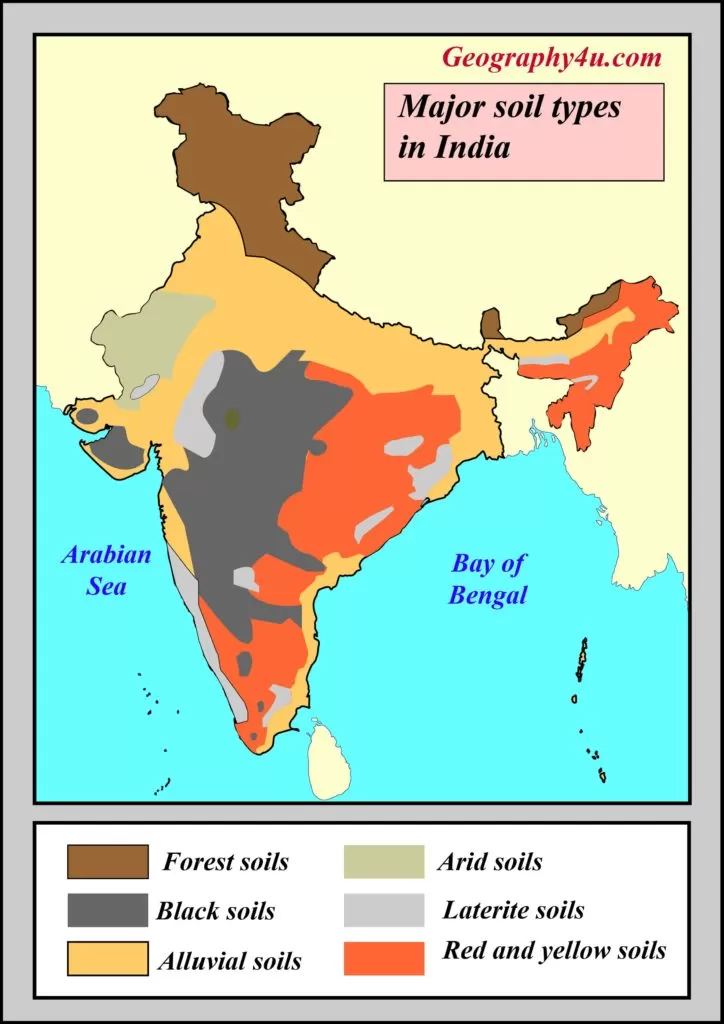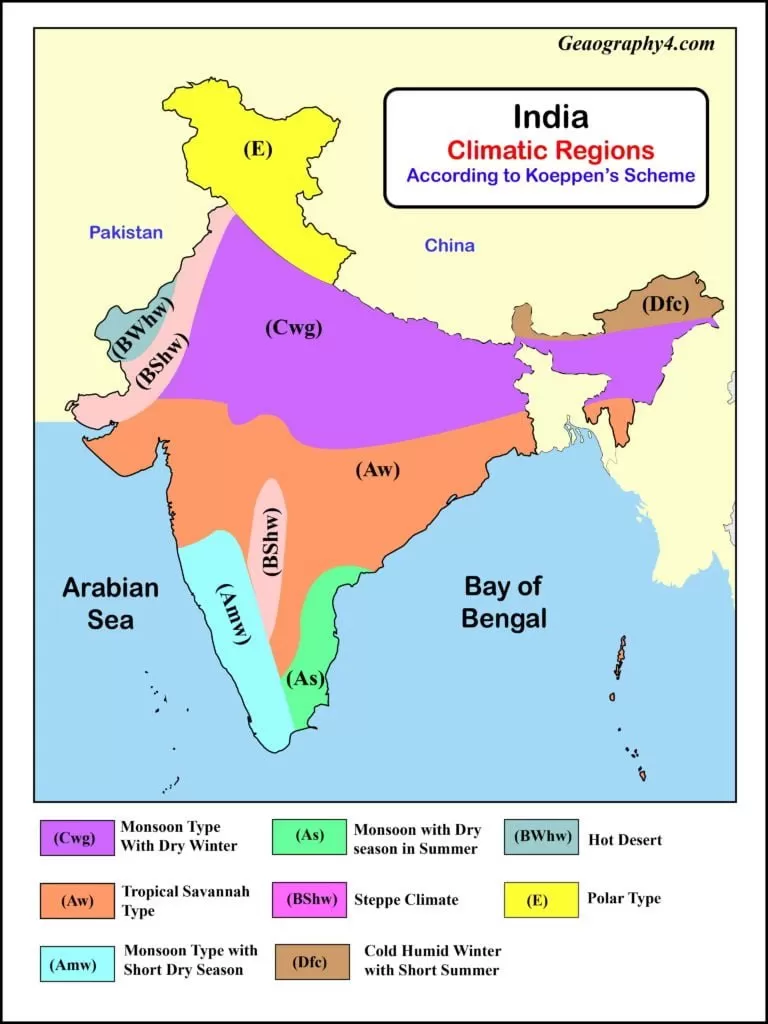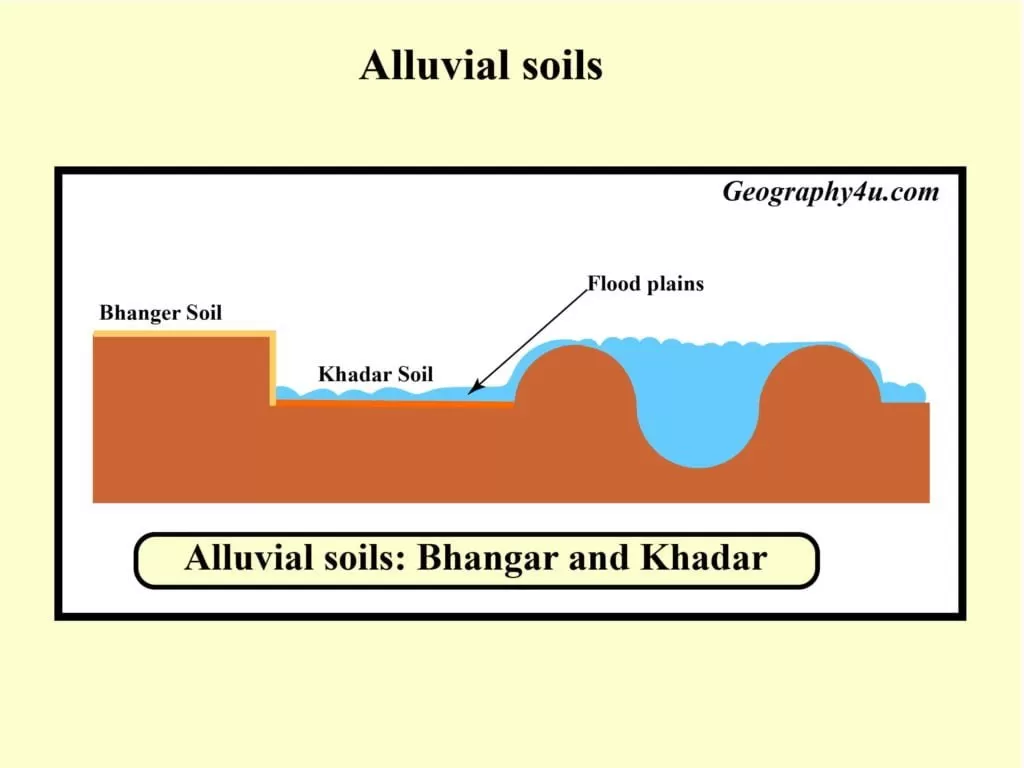Table of Contents
Introduction
In this article, I will discuss the soil types of India. We all know that soil is the most important layer of the earth. Soil is the uppermost weathered layer of the earth’s crust. The study of soil is known as Pedology. On the other hand, Pedogenesis refers to the formation of soils due to various factors. These factors are relief, parent material, climate, vegetation and other factors. Moreover, the anthropogenic factors (human activities) also involved in the formation of soil. It is a dynamic entity which always undergoes physical, chemical and biological changes.
The composition of soil
The soil is composed of both organic and inorganic material. For example, the weathering of rocks is an inorganic component of soil which provides the volume and weight to the soil. On the other hand, decayed plants and animals, roots of plants, fungi, bacteria, insects etc. constitute the organic component of the soil.
The liquid portion of soil is known as soil solution which is a complex solution necessary for the development of plants. The open spaces (pores) in the soil contains the gases existing in the atmosphere. Thus, the soil is made up of the substances existing in all three states. However, the amount of each component of soil varies according to the type of soil.
Soil profile or soil horizon
The vertical cross-section of the soil is called soil horizons. Soil horizons are the different horizontal layers present in the soil profile. These horizons have their own physical and chemical composition. The following are the different types of horizons of soil.
Organic horizon (O horizon)
It is formed of accumulation of organic matters which are derived from the plants and animals. It also contains surface litters, fallen leaves and partially decomposed organic matter.
Topsoil (A horizon)
It is the uppermost mineral horizon of the soil profile. It is rich in both the humus and inorganic minerals. A horizon is also known as the topsoil of the soil profile.
E Horizon
It mainly constitutes grains of sand or coarse silt which are left behind due to seeping of water.
Subsoil (B horizon)
It is rich in clay, oxides of aluminium and iron. Subsoil receives the aforesaid minerals from the A and E horizons.
Parent material (C horizon)
It consists of weathered parent minerals matter of the soil. C horizon is also known as Saprolite.
Bedrock (R horizon)
R horizon composed of the cemented rocks of granite, basalt and limestone.
Factors controlling the soil formation
Parent material
Parent material mainly supplies the bases and nutrients to the soil. The parent material determines the colour, mineral composition and texture of the soil. For instance, calcareous rocks tend to give rise to base-rich soils due to calcification.
Climate
It is one of the most deciding factors of the types of soil formation in India. For instance, temperature influences the rate of chemical and biological reactions. On the other hand, precipitation decides the amount of moisture, and the rate of leaching of minerals in the soils types.
Biotic factors
It constitutes both the flora and fauna of a region. For example, vegetation checks the soil erosion by binding the soil into their roots.
Topography
Topography decides the depth of soil formation. For example, the steep slopes have thinner soil than the gentle slopes.
Time
It is also one of the most significant factors of soil formation as time decides the cycle of recycling of soil and weathering of rocks. For instance, it takes hundreds of years to form a thin layer of soil due to breaking of rocks.
Classification of soil types of India as per USDA Soil Taxonomy
The Indian Council of Agricultural Research (ICAR) has classified the soil types in India based on their nature and character as per the United States Department of Agriculture (USDA) Soil Taxonomy.
| Sr. No. | Order of Soils in India | Percentage |
| 1. | Inceptisols | 39.74 |
| 2. | Entisols | 28.08 |
| 3. | Alfisols | 13.55 |
| 4. | Vertisols | 8.52 |
| 5. | Aridisols | 4.28 |
| 6. | Ultisols | 2.51 |
| 7. | Mollisols | 0.40 |
| 8. | Other | 2.92 |
Soil types of India
Based on the genesis, colour, composition and location, Indian soils have been classified into the following types.
| Sr.No | Types of soils in India |
| 1. | Alluvial soils |
| 2. | Black soils |
| 3. | Red and yellow soils |
| 4. | Laterite soils |
| 5. | Arid soils |
| 6. | Saline soils |
| 7. | Peaty soils |
| 8. | Forest soils |


Alluvial soils
- Alluvial soils are widespread in the plains of northern India and the river valleys.
- They spread over an area of 15 lakh km2 or 40% of the total area of India.
- They are derived from the sediments deposited by the Indo-Gangetic rivers.
- In Gangetic plains, these soils are known as riverine alluvium.
- Along the coastal plains, they are formed by the sea waves and called coastal alluvium.
- In Deltaic regions of India, it is known as Deltaic alluvium. For instance, the deltas of eastern coasts.
- Alluvial soils have the properties of both the sandy and loamy soils.
- Chemically, they are poor in Phosphorous but rich in Potash.
- They vary from light grey to ash grey.
- Alluvial plains are intensively cultivated in India.
- Also, there are three different varies of alluvial soils found in the upper and middle Ganga plains called khaddar, Bhangar and Terai.
Khaddar
It is found in the low-lying areas. It is deposited by annual floods and called new alluvium. Moreover, it is rich in fine silt deposits. They are more sandy but deficient in calcium and clay.
Bhangar
It is known as the older alluvium soils as found above the flood plains. They are more calcareous and clayey. Bhangar soils are mainly dark in colour.
Soil types of India: Alluvial soils

Terai
Chemically, it is rich in organic matter and nitrogen but deficient in phosphates. Due to high moisture content, it is suitable for the plantation of rice, sugarcane and jute.
Black soil
- Black soil covers most of the Deccan plateau as it is derived from the weathering of Basaltic rock formed due to solidification of lava.
- They are mostly found in Maharashtra, Madhya Pradesh, Gujrat, Andhra Pradesh and some parts of Tamil Nadu.
- Black soil is also known as Regur or black cotton soil.
- The presence of iron provides the black colour to the soil.
- The concentration of black soil is high in the upper reaches of the Godavari, Krishna and the northwestern parts of Deccan plateau.
- Geographically, they spread over 16.6% of the total area of India.
- Due to high clay content, they retain the moisture for a very long time.
- Black soil has the self-ploughing quality because they swell and become sticky when wet, and shrink when dry.
- During dry seasons, these soils develop wide cracks.
- Black soil is intensively cultivated for the cotton cultivation.
- Generally, they are deficient in Phosphate, Nitrogen and Humus but rich in lime nodules, iron, magnesia and alumina.
Laterite soil
- Laterite soils develop in the areas having high temperature and high rainfall.
- They typically found in the tropical region which receive abundant seasonal rainfall. Also, the heavy rainfall promotes the leaching of lime and silica in these soils.
- These soils are rich in oxides of iron and aluminium but poor in organic matter, Nitrogen, Phosphate and calcium.
- Due to high bacterial action, the humus content of the soil is removed very fast.
- From the agricultural perspective, they are not suitable for cultivation.
- They spread over an area of 2.5 lakh km2 of the total land of India.
- Geographically, they are found in the Eastern Ghats of Orissa, Rajmahal Hills, Vindhyas, Satpura and some southern parts of Western Ghats.
- However, the red laterite soil of Tamil Nadu and Andhra Pradesh are suitable for the plantation of Cashewnuts.
Red and Yellow soil
- They mainly develop on crystalline igneous rocks in the areas having low rainfall. For instance, Eastern and Southern parts of Deccan plateau.
- Due to the wide diffusion of iron in crystalline and metamorphic rocks, they are reddish.
- However, they look yellow in appearance when occurring in hydrated from.
- They are less leached than laterite soils.
- They cover about 10.6% of the total geographical area of India.
- Due to the huge concentration of sand, they are not retentive to moisture.
- Mainly, they are found in Orrisa and Chhattisgarh, and some southern parts of middle Ganga plains.
- These soils are rich in Potash but poor in Phosphorous, Humus, Nitrogen and Magnesia.
- They are mostly cultivated during the rainy season.
- Moreover, the fine-grained red and yellow soil are fertile however, the coarse-grained soils are poor in fertility.
Arid soils
- Arid soils are mainly red to brown in appearance.
- They have a high concentration of sand (95%) but lack of clay (5%).
- They mainly found in the regions where the rainfall is less than 50cm.
- In some region of Rajasthan, the salt concentration on these soils are high.
- It is interesting to note, the high content of salt in some regions make suitable for obtaining common salt from it.
- They lack in Nitrogen but they are normal in phosphate content.
- The lower horizons of the soil occupied by kankars which restrict the infiltration of water.
- Geographically, the high concentration of arid soil is found in Rajasthan.
- However, Punjab, Haryana and Gujrat also have these types of soil in small patches.
- Due to the high temperature in the aforesaid regions, arid soils are poor in humus and organic matter.
Saline Soils
- Saline soils are commonly known as Usara soil.
- The high proportion of Sodium, Potassium and Magnesium in these soils cause infertility.
- These soils do not support any vegetation.
- The dry climate and poor drainage make these soils salty.
- Regionally, they develop in the waterlogged and swampy areas of arid and semi-arid regions.
- Structurally, they vary from sandy to loamy.
- Saline soils lack in both Nitrogen and Calcium.
- Geographically, they are widely spread in Western Gujarat, deltas of eastern coasts and Sunderbans of West Bengal.
- Nowadays, the alluvial regions of Green revolution are becoming saline due to intensive cultivation.
- Both intensive irrigation and dry climatic conditions promote the capillary action in these soils and make them salty. For instance, Punjab and Haryana.
Peaty soils
- Peaty soils are found in the regions having heavy rainfall and high humidity.
- They are rich in Humus and organic matter (40-50%).
- They are mainly black in appearance.
- Geographically, they are found in the northern parts of Bihar, southern parts of Uttrakhand and Coastal areas of West Bengal, Odisha and Tamil Nadu.
Forest Soils in India
- Forest soils are formed in the forest areas having sufficient rainfall.
- Structurally, they are of three types Brown forest soil, Podzol and Alpine meadow soil.
- They are both loamy and silty on the valley sides but coarse-grained in the upper slopes.
- These types of soils have great variety in the Himalayas.
Soil types of India in forests
| Sr. No. | Types of forest soils | Characteristics |
| 1. | Brown forest soil | 1. Found between 900-1800m. 2. Rich in humus. 3. Slightly acidic. 4. Mostly has deciduous forest. |
| 2. | Podzol | 1. Found above an elevation of 1800m. 2. Has thick coniferous forests. 3. Has thick forest cover. |
| 3. | Alpine Meadow soil | 1. Found in the Himalayan’s Alpine. 2. Has decomposed plants. 3. Either sandy-clay or sandy-loam. |
READ MORE ARTICLES
- How did the theory of plate tectonics evolve over time?
- 7 Criticisms of Continental Drift Theory by Alfred Wegener
- Malthus theory of population: critical analysis & relevance
- Major Types of Clouds formation and their Characteristics
- Get Detailed Bpsc syllabus 2022-23
- Complete bpsc geography optional syllabus 2022
- Major mineral resources of India with maps
- Von thunen theory of agricultural location
- Weber’s theory of industrial location
